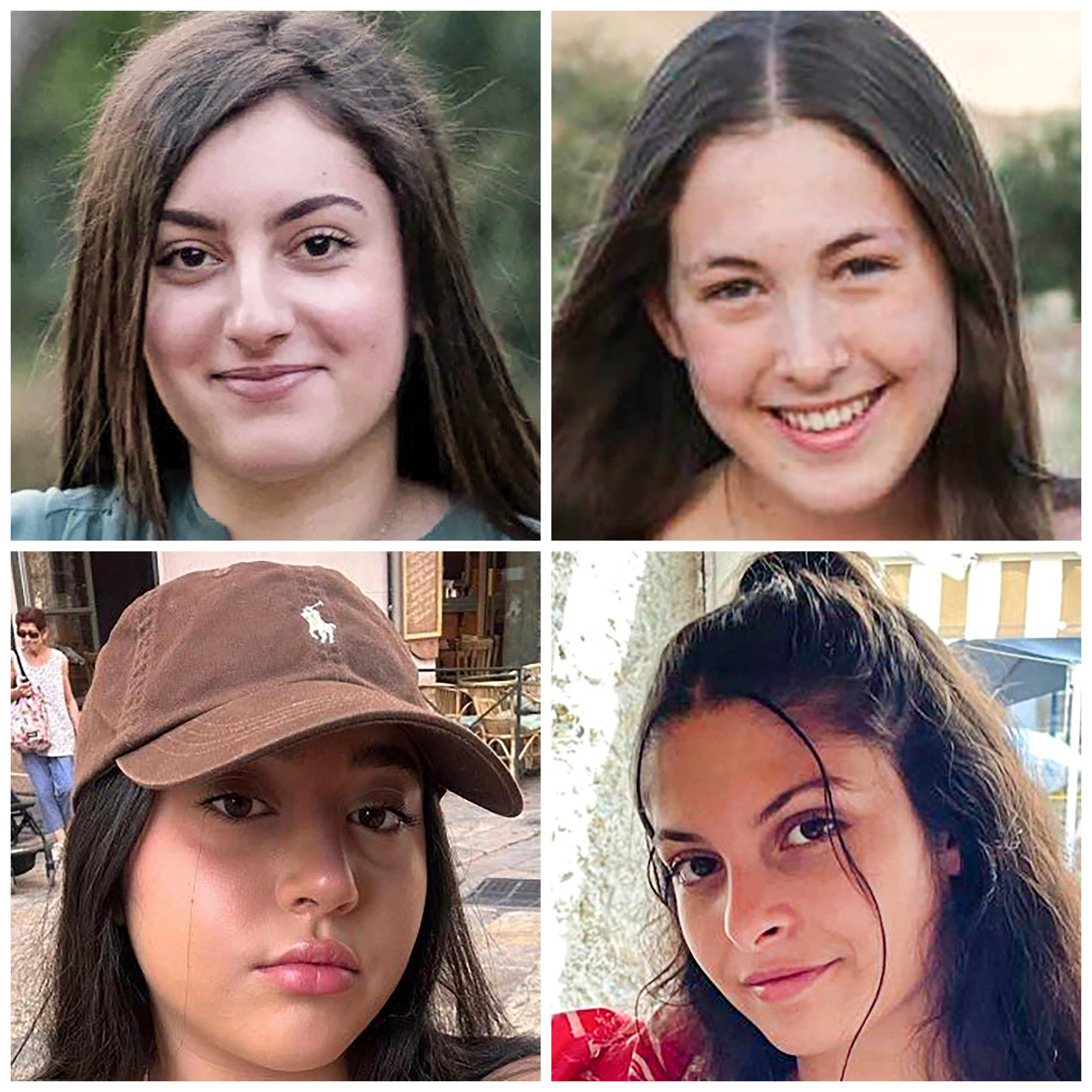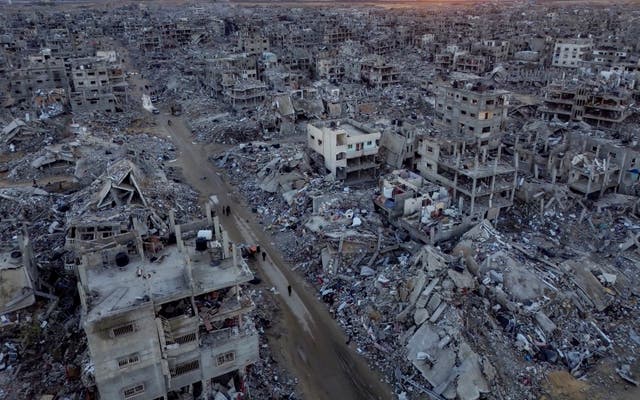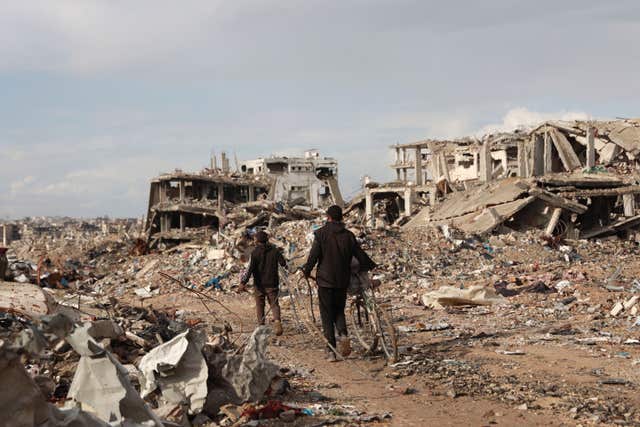Desperate families await return of four female soldiers held by Hamas
An advocacy group representing the families of hostages confirmed the identities of the captive Israelis who are set to be released Saturday.

Hamas announced on Friday that it would release four female soldiers held hostage for 15 months in Gaza, as part of an exchange for dozens of Palestinian prisoners laid out in its ceasefire agreement with Israel.
An advocacy group representing the families of hostages confirmed the identities of the captive Israelis to be released on Saturday.
Under the deal that paused the 15-month war, Israel would release 200 Palestinian prisoners or detainees in exchange for the four Israeli women, including 120 militants serving life sentences after being convicted of deadly attacks.

In a statement, The Hostages and Missing Families Forum welcomed their expected release.
“An entire nation has fought for them and anxiously awaits their longed-for return to their families’ embrace,” it said.
The office of Israeli Prime Minister Benjamin Netanyahu said it had received the list of names of hostages slated for release, without revealing their identities.
Relatives of hostages still being held in Gaza had earlier on Friday called on Mr Netanyahu to ensure that all remaining captives are freed, and appealed to US President Donald Trump to continue pressing for their release.
– Who are the Israeli hostages being released?
The four female soldiers on Hamas’ list were taken from Nahal Oz base near the border with Gaza when Palestinian militants overran it on October 7 2023, killing more than 60 soldiers there.
The female abductees had all served in a unit of lookouts charged with monitoring threats along the border.
A fifth female soldier in their unit, Agam Berger, 20, was abducted with them but not included in the list.
On October 7, Ms Ariev, one of the soldiers being released, texted her family goodbye as she was being dragged into Gaza: “If I don’t live, take care of Mom and Dad all their lives. Don’t give up. Live.”
Her family said she loves to cook, sing, dance and write poetry.
A year ago, Hamas released a video clip showing her and Ms Gilboa, another soldier in her unit, pleading for their release.
Daniella Gilboa’s name was originally Danielle, but after her abduction her parents changed it to Daniella, citing the Jewish belief that changing a name can change someone’s fortune.

Ms Gilboa has said she dreams of becoming a professional singer.
Other footage from October 7 shared all over the world shows Ms Levy, a soldier and triathlete, wearing blood-stained grey sweatpants as she is abducted from her base.
When she was younger, she participated in the US-based “Hands of Peace” delegation, which brings together Americans, Israelis and Palestinians to work on coexistence.
Earlier this month, as ceasefire negotiations dragged on, Hamas’ military wing released a video that showed Ms Albag, the youngest of the soldiers slated for release, in what her family said was “severe psychological distress”.
– What happens next?
As a fragile six-week ceasefire between Israel and Hamas entered its sixth day, there were more than 90 hostages still being held in Gaza.
Israel believes about a third, or possibly as many as half, of the more than 90 hostages still in Gaza have died.
Hamas has not released definitive information on how many captives are alive or the names of those who have died.

About 100 were released during a brief ceasefire in November that year.
The bodies of around three dozen hostages have been recovered in Gaza. Eight hostages have been rescued by the army.
In the first phase of the ceasefire deal, 33 hostages — including women, children, sick people and those over 50 — are expected to be released gradually in return for hundreds of Palestinian prisoners held by Israel.
Most of the 33 are civilians, but the deal also commits Hamas to freeing all living female soldiers in Phase 1, which is expected to last 42 days.
Hamas will release living hostages first, but could release some bodies if they do not have enough living hostages in this category.
The first three Israeli hostages were freed in exchange for 90 Palestinian prisoners on Sunday, the first day of the ceasefire that has halted the longest and deadliest war in a century of Israeli-Palestinian conflict.
The poignant scenes of hostages reuniting with their families last week brought joy and relief but also worry about the other hostages still trapped in Gaza.
Israel is expected to release a list of which Palestinian prisoners will be freed.

It said the Red Cross would ferry Palestinian prisoners by bus from Ofer Prison near the West Bank city of Ramallah to different locations for their release.
– Where does the agreement stand in Gaza?
By the weekend, the truce obligates Israeli forces to partially withdraw from a key route in central Gaza, in order to let hundreds of thousands of displaced Palestinians to return to the remnants of their homes in the battered north.
Palestinian civilians in the south should be allowed to take a coastal road to northern Gaza from Saturday.
Those in other parts of Gaza seized on the ceasefire this week to reunite with scattered family members, picking their way through vast swathes of rubble and trying to salvage what remained of their homes and their belongings. But those displaced from the north have had to wait.
“The first thing I’ll do, I’ll kiss the dirt of the land on which I was born and raised,” said Nadia Al-Debs, one of the many people gathered in makeshift tents in Gaza’s central city of Deir al-Balah preparing to set out north for Gaza City the next day. “We’ll return so my children can see their father.”
Wide swathes of Gaza have been destroyed, while more than 47,000 Palestinians have been killed, according to Gaza’s health authorities, who do not differentiate between combatants and civilians but say more than half are women and children.





